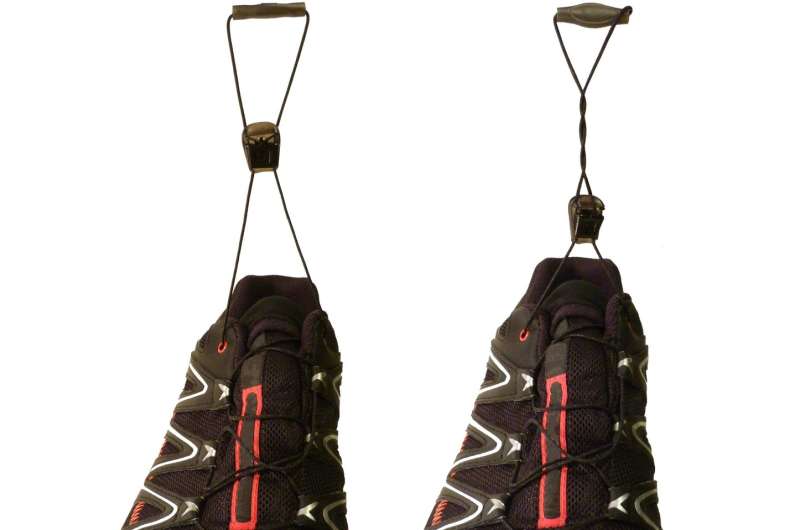Supercoiling pushes molecular handcuffs along chromatin fibres

Gene regulation relies on complex structural arrangements and processes at the molecular level. One of them, called 'chromatin loop extrusion', strikingly resembles the quick-lacing system of some trail running shoes: as the buckle is pushed downward, a larger loop is extruded on the top. This is where the transcription takes place.
Recent advances in the field of genome structure have identified that cohesin—a protein complex forming a pair of molecular bracelets, or handcuffs—plays the buckle part. By binding tightly to the chromatin fibres, cohesin initially traps small DNA loops. These loops grow as the cohesin handcuffs slides along the fibres.
"Cohesin is a central piece of the gene regulation puzzle," says SIB Group Leader Andrzej Stasiak. "There is a hot debate ongoing as to what is triggering the movement of this protein complex along the chromatin."
Cohesin is known to play several key roles in chromosome structure. And, indeed, should something go wrong with cohesin, severe developmental anomalies or forms of cancers can appear.
Supercoiling as the motor of chromatin loop extrusion
Andrzej Stasiak's DNA and Chromosome Modelling Group at SIB set out to understand the nature of the motor that is pushing cohesin along the fibres.
One of their hints came from a growing number of studies showing that transcription induces an axial rotation of transcribed DNA. This in turn is known to result in the coiling of chromatin loops around themselves, similarly to what is shown in Figure 1 for shoe laces.
So the team simulated what happens when transcription-induced supercoiling is generated in small chromatin loops flanked by cohesin handcuffs.
"We observed that supercoiling started to accumulate in the chromatin portion flanked by the cohesin handcuffs," says Stasiak, "and, to our surprise, that supercoiling was physically pushing cohesin handcuffs along embraced chromatin fibres, so that the chromatin loop they were gripping was actively growing, exactly as required to form TADs."
This modelling study establishes the basis of a new chemo-mechanical process of transduction operating in chromosomes, and shaping them into structures required for optimal regulation of gene expression.
Chromosomes cyclically change shape during the cell cycle. During interphase, which is when transcription occurs, they are in a decondensed form and look like microscopic wool balls. Within these wool balls, the chromatin fibre must acquire a particular structure for transcription to take place: genes must be put in physical proximity to their regulatory elements. This is done within particular regions, known as Topologically Associating Domains, or TADs. The formation of TADs is believed to start with the apparition of growing loops in the fibre. This phenomenon, known as chromatin loop extrusion, is still considered a mechanistic puzzle.
More information: Dusan Racko et al. Transcription-induced supercoiling as the driving force of chromatin loop extrusion during formation of TADs in interphase chromosomes, Nucleic Acids Research (2017). DOI: 10.1093/nar/gkx1123
Journal information: Nucleic Acids Research
Provided by Swiss Institute of Bioinformatics


















